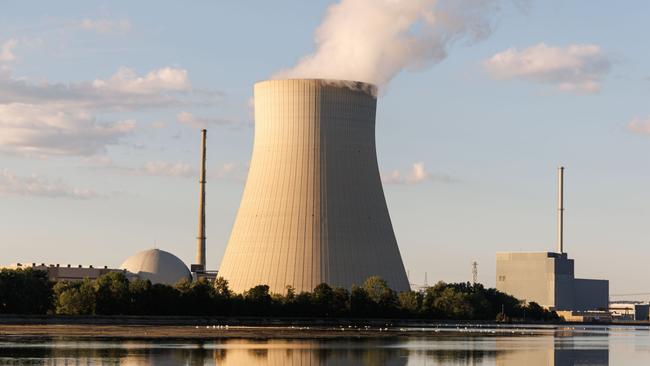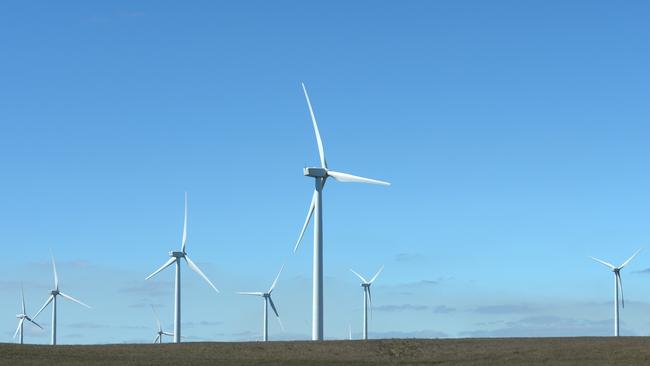Piers Akerman: Nuclear naysayers blind to benefits while wilfully ignorant of solar and wind power flaws
A Year 11 student has done more than the government to put the facts on nuclear energy before the people, writes Piers Akerman.
Opinion
Don't miss out on the headlines from Opinion. Followed categories will be added to My News.
The federal Labor frontbench has learnt nothing over the summer break.
As Martin Luther King Jr is claimed to have said: “Nothing in the world is more dangerous than sincere ignorance and conscientious stupidity.”
When it comes to the debate on lifting the ban on nuclear energy, Prime Minister Anthony Albanese, Treasurer Jim Chalmers and Energy and Climate Change Minister Chris Bowen personify that quote. Albanese again repeated Bowen’s mantra that nuclear is the most expensive form of energy when he attempted to rubbish Coalition energy spokesman Ted O’Brien’s nuclear fact-finding trip to Japan.
Opponents of nuclear energy should take a leaf out of O’Brien’s book and do some research – better still, they should read the 38 submissions currently posted by the Senate Committees on Environment and Communications’ inquiry into removing the ban on nuclear energy.

My favourite is that posted by William Shackel who, as a Year 11 student, founded Nuclear for Australia, an independent, non-registered information campaign advocating for the ban on nuclear energy in Australia to be lifted.
Shackel’s submission explores nuclear energy from the perspective of a young person (even the greener-than-green Greta Thunberg embraces nuclear) and examines its environmental impacts, economic viability, safety, community support and more before concluding that nuclear is not only one of the most environmentally friendly sources of energy but, importantly, is economically viable with community support in Australia. Further, Shackel writes, none of the potential harms that arise from nuclear are enough to justify such a draconian prohibition.

As Shackel notes in his extremely detailed submission, the primary issue with solar energy pertains to the manufacturing of photovoltaic panels and their disposal.
Solar requires 14 times more materials than nuclear, with individual panels composed of many minerals and a plethora of toxic chemicals which, unlike radioactive waste, never lose their toxicity.
When disposed of, solar panels produce copious amounts of waste with most elements not recycled. This is unsurprising given the current price to recycle a photovoltaic panel is $US20-$30 compared to $US1-$2 to simply dispose of one in landfill. As a result, currently in Australia only 17 per cent of a solar panel’s mass can be recycled and, considering the approximately 21-year lifespan of a panel, it is estimated Australia will accumulate 145,000 tonnes a year of solar PV waste by 2030. Moreover, solar also requires 379 times more land than nuclear with a 2021 study estimating up to 2.8 per cent of the European Union would be needed if solar accounted for 80 per cent of electricity generation by 2050.

Wind energy also has severe environmental effects. Most significant is its land footprint. On average, wind requires 421 times more land than nuclear, with estimates comparing it to the Rolls Royce SMR, stipulating 10,000 times more land is needed for wind to produce the same output of electricity. In most cases, this land is unsuitable for further use, with exclusion zones needed to avoid negative health impacts derived from wind turbines. Moreover, wind turbines have a detrimental impact on wildlife, particularly birds.
Using an estimate formulated by ecologist Emma Bennett, annually each wind turbine in Australia kills 17 birds which, when extrapolated, suggests up to 47,000 birds are killed each year which will dramatically increase with new investment in wind farms required as part of current government climate plans.
Predictably, there is a handful of absurdly irrelevant submissions from citizens concerned about nuclear war but the government’s own submission is possibly the most risible.
Written by Beth Brunoro, the acting deputy secretary for the Department of Climate Change, Energy, the Environment and Water, it relies on the totally discredited GenCost 2021-22 report.
Last September, this column reported on the Energy Policy Institute of Australia’s comprehensive demolition of the GenCost report.
Author of the EPIA paper Robert Carland concluded that GenCost’s capital cost estimates for nuclear small modular reactors (SMRs) were outdated and significantly overstated.
It found that nuclear power could facilitate Australia’s energy transition at least cost when an objective analysis is undertaken of the latest costs. Indeed, unless the prohibition on nuclear power is lifted, developers would never be given the incentive to bring forward nuclear power projects in Australia.
But here’s the reality that the Labor ignoramuses wilfully reject.
When writing this column, the average price for electricity in NSW was 28c/kWh (kilowatt hour) but in the province of Ontario, where nearly 60 per cent of electricity is generated from its 15 operating nuclear power stations, the average price was half that – 14c/kWh – and Ontario is adding an SMR to boost its clean energy production.
It takes just one student, not a department, to put the facts on nuclear energy before the people and expose the fools responsible for the laughable ban on nuclear power.





